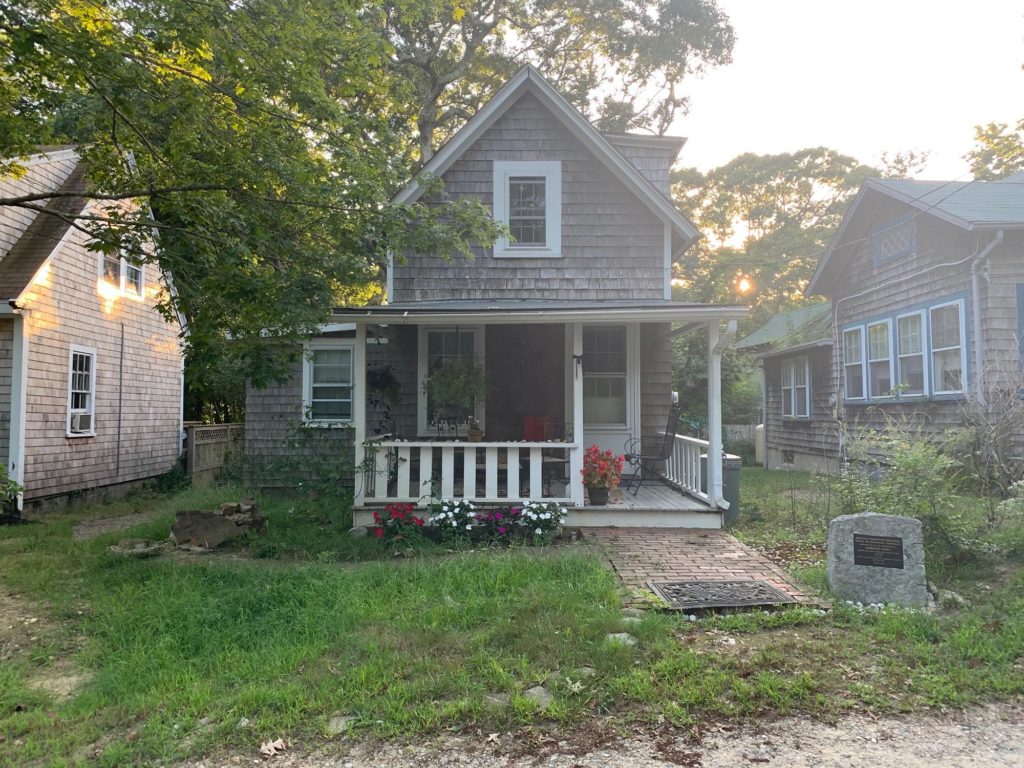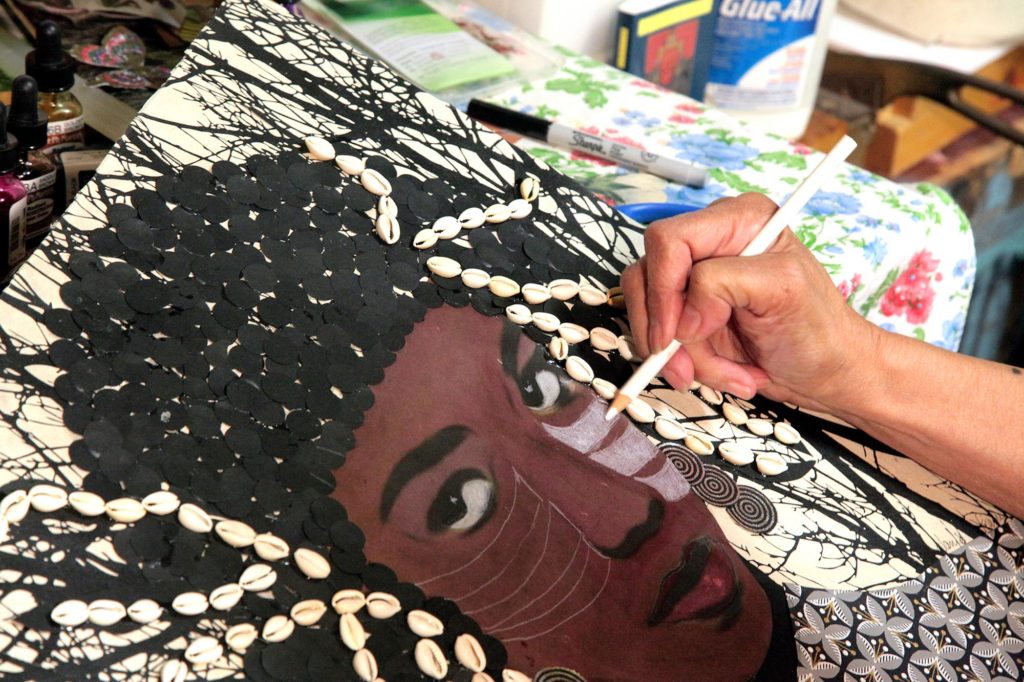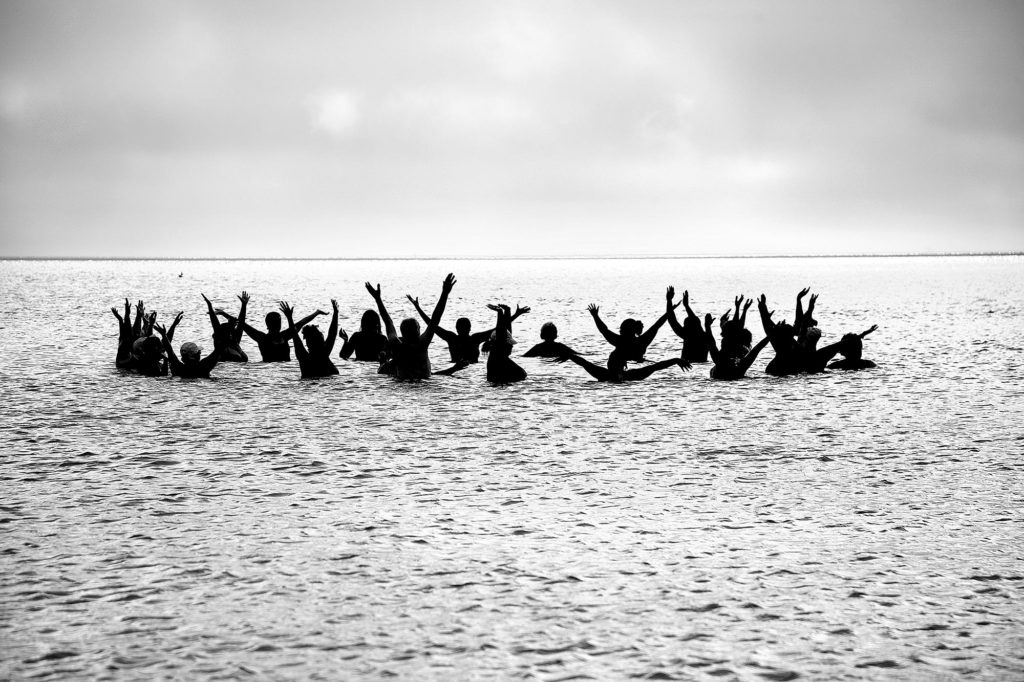get these nets
Veteran
A Black Artist’s Haven on a White Vineyard
Martha's Vineyard has long been seen as a summer retreat for the East Coast elite. The island’s reality, however, is a far more complex environment that has welcomed and inspired generations of Black Americans, including an artist and doll maker named Janice Frame.

Some of the earliest visitors to Oak Bluffs, on Martha's Vineyard, were Methodists, who started holding annual meetings here in 1835. As families returned year after year, they moved from tents to small cottages. Enchanted by the cottages’ “Carpenter’s Gothic” architecture, subsequent owners added complex wooden scrollwork and other adornments. Oak Bluffs' “gingerbread cottages” are now a National Historic Landmark.
Martha’s Vineyard has been a major part of my life since 1955, when my parents brought the family here for the summer; they fell so in love with the place that they soon bought a house, built in 1872, which we continue to own, in a Vineyard town called Oak Bluffs.
As we happen to be Black, I understand how difficult it might be for others to see Black families having such financial means. But plenty do, and plenty of them gather here. In an effort to follow the saying about it taking a village, children were encouraged to use ‘Aunt’ and ‘Uncle’ for the adults of Oak Bluff’s African-American summer community who fished, played tennis, golfed, swam and were welcome at social gatherings that at times included White people. Folks rocked on porches to breezes off of Nantucket Sound, enjoyed clam bakes and ice cream, dined out and shared warm summer evenings. Children made friends at the beach where mothers became friends during the week, and which led, when the “Daddy boats” arrived on Friday night, to shared weekend cocktails and cookouts. Over time, our friends’ parents and our respective children became friends for generations.
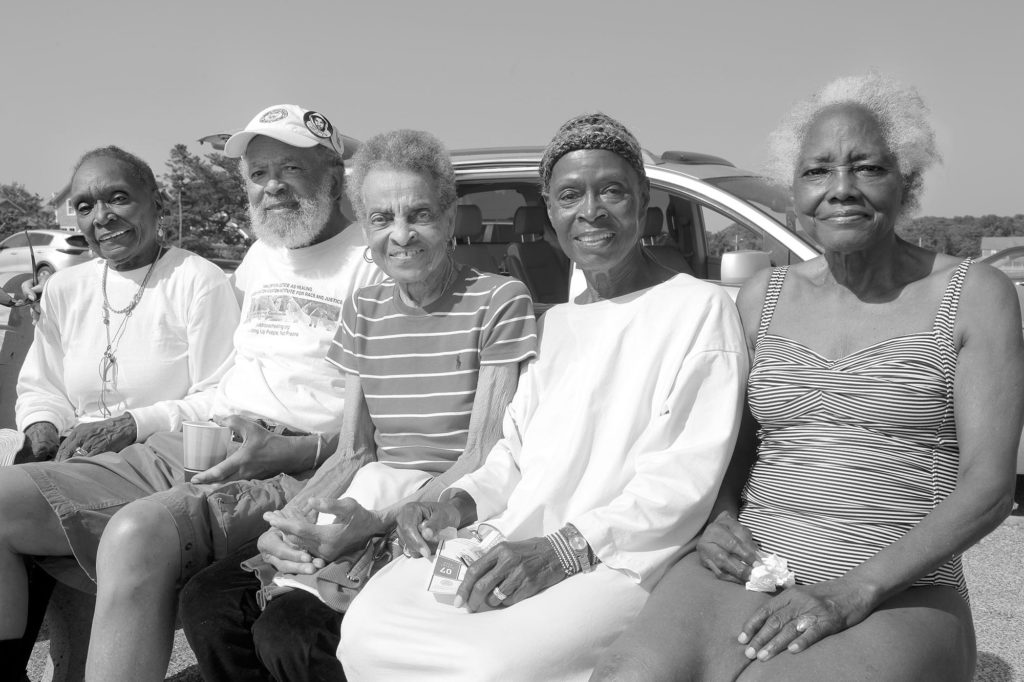
From July 4th through Labor Day, the “Inkwell” Polar Bears club of Oak Bluffs regularly meets to swim and exercise in the Nantucket Sound. Here, Dr. Delores Goode, Matthew Goode, Phyllis DeChalus, Dr. Frances Gaskins, and Jonnie Marshall pose at Inkwell Beach, so named for its history of drawing Black bathers. photo by Michael Johnson
Those sun-filled summers were spent free of the current events throughout the decades that spot-lighted America’s ugly strands of systemic racism. Even today, when leaving the island, we say, tongue-in-cheekily, “We’re going to America.” If you can imagine a place where being Black does not occupy most of one’s attention, Martha’s Vineyard is that place; and the Town of Oak Bluffs its capitol.
In 1857, Frederick Douglass, the Black orator and journalist who challenged Abraham Lincoln for the presidency, spoke twice on the Vineyard. Before long, several other abolitionists helped found Oak Bluffs.
Martha’s Vineyard always was, and still is, a mostly White community—only 12 percent of the population constitutes people of color; even in Oak Bluffs, less than five percent of the population is Black. Nonetheless, scattered between the myriad neighborhoods inhabited by old money families of the East Coast’s White upper class, various minority groups have prospered. There’s the Wampanoag Native American tribe, which lives in Aquinnah, a thriving township on the island’s western corner. The Vineyard also has a long history of being home to the nation’s largest per-capita concentration of deaf people, a reality that so dominated island life that the deaf community formed its own sign language (Martha’s Vineyard Sign Language, or MVSL). Since the early 1900s, the island has been a draw for Portuguese-Americans and, more recently, immigrants from Brazil.
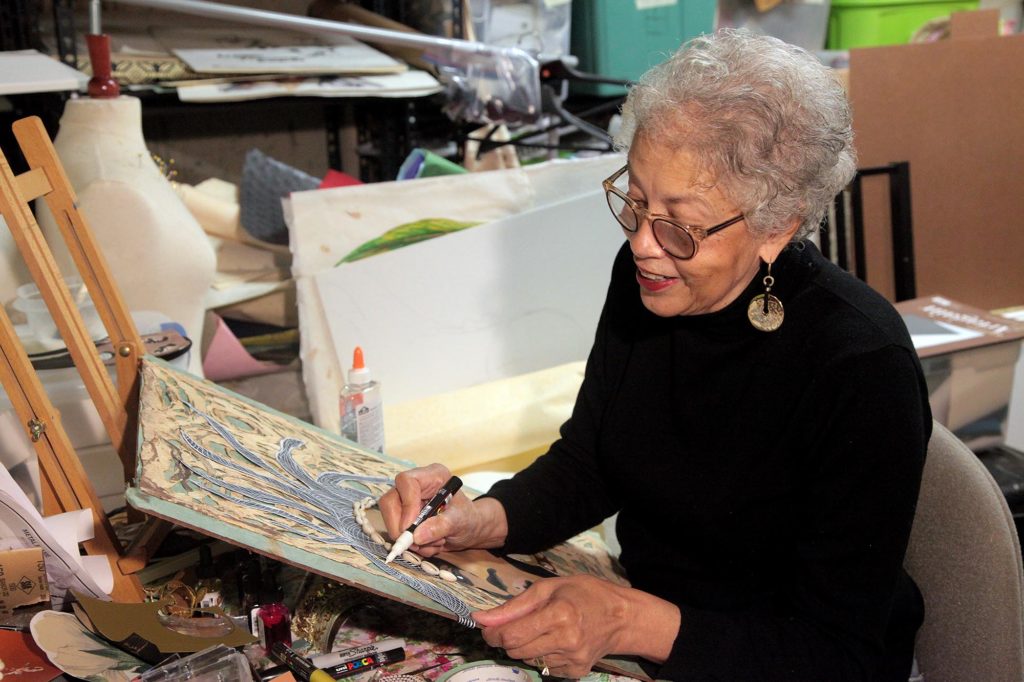
In addition to creating dolls and portraits that have carved her place in the art world, Janice Frame taught art and ballet in Martha’s Vineyard schools for 30 years. photo by Michael Johnson
The heritage of racial tolerance across much of Martha’s Vineyard arose partly because, centuries ago, the island played a central role in the early American whaling industry, which was developed by the Quakers. The whaling captains wanted indigenous, Black, and other people of color to man their ships, but the Quakers abhorred the practice of slavery. Outlawed on Nantucket in 1773, and then in Massachusetts in 1783, slavery was fought by a good number of Martha’s Vineyard’s abolitionists. One was Reverend Samuel Sewall, a frequent Vineyard visitor and a prominent judge who became infamous for his involvement in the Salem Witch Trials. He was no fan of slavery, however, and his anti-slavery manifesto of 1770, “The Selling of Joseph,” is believed to be the nation’s first document of its type.
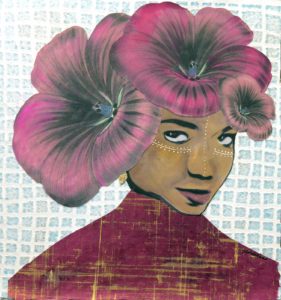
Janice Frame wants her work to connect the African diaspora with the Western world. This portrait, titled “Eloquence Speaks,” is made from resin, acrylic, and handmade paper. photo by Michael Johnson
In 1857, Frederick Douglass, the Black orator and journalist who challenged Abraham Lincoln for the presidency, spoke twice on the Vineyard. Before long, several other abolitionists helped found Oak Bluffs, which soon developed a reputation as a welcoming vacation spot for Black Americans; until the 1960s, in fact, Oak Bluffs was the only town on the island that welcomed Black tourists or would allow them to stay at local inns and hotels. Oak Bluffs’ history of racial inclusion eventually led to a permanent exhibit entitled “The Power of Place,” which debuted in 2018 in The National Museum of African American History and Culture in Washington, D.C. Today, Oak Bluffs is not only the Vineyard’s largest island town, it also boasts one of the island’s most popular tourist attractions—a collection of cute Victorian homes referred to as the “Gingerbread cottages.”
My connection to Janice Frame, the subject of this story, started one summer long before all this, when I got a job as a teenager at Oak Bluffs’ Flying Horses, the oldest platform carousel in America and a national landmark. Carousel riders grab steel rings from an armature as they ride the horses to the music of classical waltzes, anticipating catching the last one—a brass ring, which still entitles you to a free ride. About a dozen years later, my wife and I met Janice and Leo Frame—thanks to the friendship of my oldest daughter with their son. That year, he had that same job and was kind enough, after hearing I once worked there too, to gift me an original brass ring, which I still have.
Frame says her creativity was inspired by her uncle, Fetaque Sanders, who pored over magic books as a child and, from the 1940s to the 1960s, became the country’s most prominent Black magician.
Many years later, following my former career as a radio executive, I decided to become a writer; and Janice Frame, with a similar family background, became an artist.
Martha's Vineyard has long been seen as a summer retreat for the East Coast elite. The island’s reality, however, is a far more complex environment that has welcomed and inspired generations of Black Americans, including an artist and doll maker named Janice Frame.

Some of the earliest visitors to Oak Bluffs, on Martha's Vineyard, were Methodists, who started holding annual meetings here in 1835. As families returned year after year, they moved from tents to small cottages. Enchanted by the cottages’ “Carpenter’s Gothic” architecture, subsequent owners added complex wooden scrollwork and other adornments. Oak Bluffs' “gingerbread cottages” are now a National Historic Landmark.
Martha’s Vineyard has been a major part of my life since 1955, when my parents brought the family here for the summer; they fell so in love with the place that they soon bought a house, built in 1872, which we continue to own, in a Vineyard town called Oak Bluffs.
As we happen to be Black, I understand how difficult it might be for others to see Black families having such financial means. But plenty do, and plenty of them gather here. In an effort to follow the saying about it taking a village, children were encouraged to use ‘Aunt’ and ‘Uncle’ for the adults of Oak Bluff’s African-American summer community who fished, played tennis, golfed, swam and were welcome at social gatherings that at times included White people. Folks rocked on porches to breezes off of Nantucket Sound, enjoyed clam bakes and ice cream, dined out and shared warm summer evenings. Children made friends at the beach where mothers became friends during the week, and which led, when the “Daddy boats” arrived on Friday night, to shared weekend cocktails and cookouts. Over time, our friends’ parents and our respective children became friends for generations.

From July 4th through Labor Day, the “Inkwell” Polar Bears club of Oak Bluffs regularly meets to swim and exercise in the Nantucket Sound. Here, Dr. Delores Goode, Matthew Goode, Phyllis DeChalus, Dr. Frances Gaskins, and Jonnie Marshall pose at Inkwell Beach, so named for its history of drawing Black bathers. photo by Michael Johnson
Those sun-filled summers were spent free of the current events throughout the decades that spot-lighted America’s ugly strands of systemic racism. Even today, when leaving the island, we say, tongue-in-cheekily, “We’re going to America.” If you can imagine a place where being Black does not occupy most of one’s attention, Martha’s Vineyard is that place; and the Town of Oak Bluffs its capitol.
In 1857, Frederick Douglass, the Black orator and journalist who challenged Abraham Lincoln for the presidency, spoke twice on the Vineyard. Before long, several other abolitionists helped found Oak Bluffs.
Martha’s Vineyard always was, and still is, a mostly White community—only 12 percent of the population constitutes people of color; even in Oak Bluffs, less than five percent of the population is Black. Nonetheless, scattered between the myriad neighborhoods inhabited by old money families of the East Coast’s White upper class, various minority groups have prospered. There’s the Wampanoag Native American tribe, which lives in Aquinnah, a thriving township on the island’s western corner. The Vineyard also has a long history of being home to the nation’s largest per-capita concentration of deaf people, a reality that so dominated island life that the deaf community formed its own sign language (Martha’s Vineyard Sign Language, or MVSL). Since the early 1900s, the island has been a draw for Portuguese-Americans and, more recently, immigrants from Brazil.

In addition to creating dolls and portraits that have carved her place in the art world, Janice Frame taught art and ballet in Martha’s Vineyard schools for 30 years. photo by Michael Johnson
The heritage of racial tolerance across much of Martha’s Vineyard arose partly because, centuries ago, the island played a central role in the early American whaling industry, which was developed by the Quakers. The whaling captains wanted indigenous, Black, and other people of color to man their ships, but the Quakers abhorred the practice of slavery. Outlawed on Nantucket in 1773, and then in Massachusetts in 1783, slavery was fought by a good number of Martha’s Vineyard’s abolitionists. One was Reverend Samuel Sewall, a frequent Vineyard visitor and a prominent judge who became infamous for his involvement in the Salem Witch Trials. He was no fan of slavery, however, and his anti-slavery manifesto of 1770, “The Selling of Joseph,” is believed to be the nation’s first document of its type.

Janice Frame wants her work to connect the African diaspora with the Western world. This portrait, titled “Eloquence Speaks,” is made from resin, acrylic, and handmade paper. photo by Michael Johnson
In 1857, Frederick Douglass, the Black orator and journalist who challenged Abraham Lincoln for the presidency, spoke twice on the Vineyard. Before long, several other abolitionists helped found Oak Bluffs, which soon developed a reputation as a welcoming vacation spot for Black Americans; until the 1960s, in fact, Oak Bluffs was the only town on the island that welcomed Black tourists or would allow them to stay at local inns and hotels. Oak Bluffs’ history of racial inclusion eventually led to a permanent exhibit entitled “The Power of Place,” which debuted in 2018 in The National Museum of African American History and Culture in Washington, D.C. Today, Oak Bluffs is not only the Vineyard’s largest island town, it also boasts one of the island’s most popular tourist attractions—a collection of cute Victorian homes referred to as the “Gingerbread cottages.”
My connection to Janice Frame, the subject of this story, started one summer long before all this, when I got a job as a teenager at Oak Bluffs’ Flying Horses, the oldest platform carousel in America and a national landmark. Carousel riders grab steel rings from an armature as they ride the horses to the music of classical waltzes, anticipating catching the last one—a brass ring, which still entitles you to a free ride. About a dozen years later, my wife and I met Janice and Leo Frame—thanks to the friendship of my oldest daughter with their son. That year, he had that same job and was kind enough, after hearing I once worked there too, to gift me an original brass ring, which I still have.
Frame says her creativity was inspired by her uncle, Fetaque Sanders, who pored over magic books as a child and, from the 1940s to the 1960s, became the country’s most prominent Black magician.
Many years later, following my former career as a radio executive, I decided to become a writer; and Janice Frame, with a similar family background, became an artist.
Last edited:
